The Hitachi Global Foundation Asia Innovation Award is an award program launched in 2020 to promote science, technology and innovation that contributes to solving social issues and realizing a sustainable society in the ASEAN region.
This award recognizes individuals and groups that undeniably served public interests through their outstanding achievements in research and development (R&D) in the fields of science and technology, including their visions of an ideal future society and social implementation plans for R&D as a means of achieving SDGs.
In the fiscal year of 2022, we solicited research and R&D achievements from 23 universities in 6 ASEAN countries (Cambodia, Indonesia, Laos, Myanmar, Philippines, and Vietnam) contributing to each of selected targets of Goal 6 (Clean Water and Sanitation) and Goal 11 (Sustainable cities and communities).
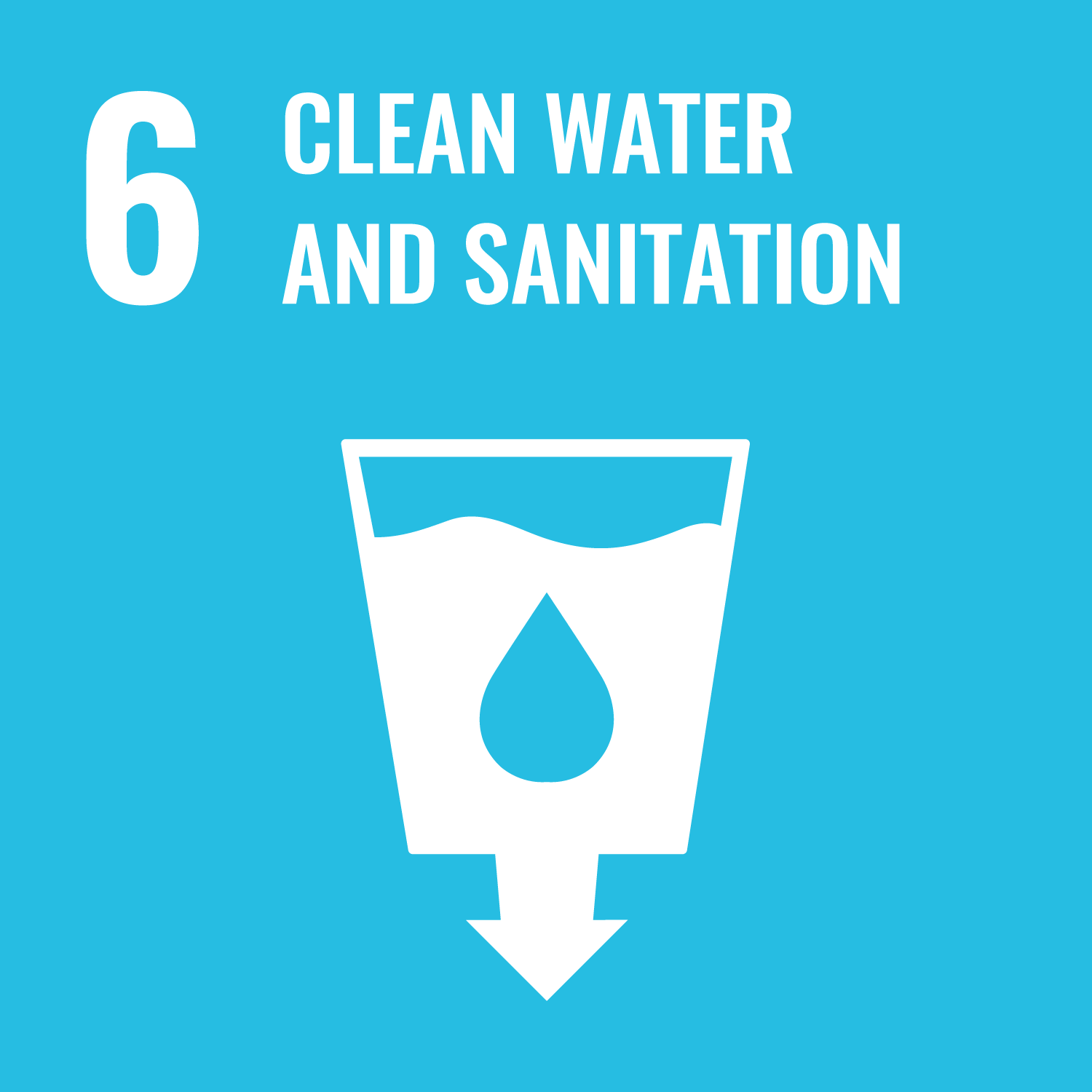
Goal 6 "Clean Water and Sanitation"
Targets 6.1 Access to safe and affordable drinking water, 6.2 Access to sanitation and hygiene, 6.3 Reducing pollution, minimizing release of hazardous chemicals and materials, 6.4 Increase water-use efficiency across all sectors and ensure sustainable withdrawals and supply of freshwater, 6.5 Integrated water resources management, 6.6 Protect and restore water-related ecosystems
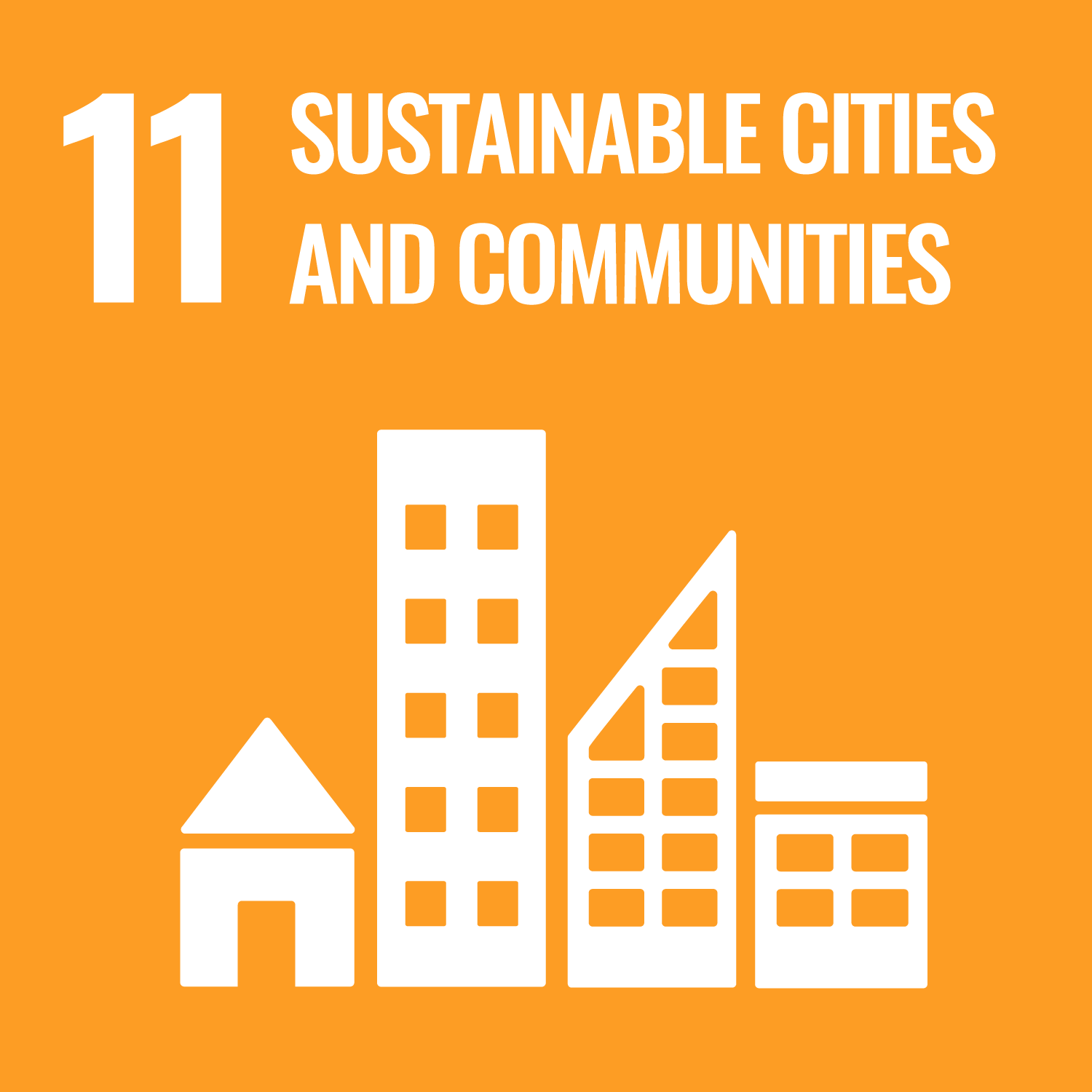
Goal 11 "Sustainable Cities and Communities"
Targets 11.1 Upgrade slums, 11.3 Inclusive and sustainable urbanization, 11.5 Reduce damage and economic losses caused by disasters, 11.6 Paying attention to air quality and waste management, 11.7 Access to green and public spaces, 11.b Develop and implement disaster risk management
We received applications from eligible universities by recommendation, and the 16 recipients were selected through a document screening and an online interview by the selection committee.
We would like to introduce the review by Chairman of Selection Committee, the outline of the awardee's research, and awardee's greetings as follows.
I would like to report the selection process of The Hitachi Global Foundation Asia Innovation Award.
The Hitachi Global Foundation Asia Innovation Award is an award program launched in 2020 to promote science, technology and innovation that contributes to solving social issues and realizing a sustainable society in the ASEAN region. This award has been recognizing individuals and groups that undeniably served public interests through their outstanding achievements in research and development (R&D) in the fields of science and technology, including their visions of an ideal future society and social implementation plans for R&D as a means of achieving the United Nation's SDGs. Each year, the Foundation sets two goals and several relevant targets from the 17 SDG goals and 169 targets. Applicants present their achievements in research and development that contribute to these goals and targets. They also submit a social implementation plan for their achievements describing their social vision for their country or the ASEAN region.
In fiscal year 2022, we solicited research and R&D achievements from 23 universities in 6 ASEAN countries (Cambodia, Indonesia, Laos, Myanmar, Philippines, and Vietnam) contributing to each of selected targets of Goal 6 (Clean Water and Sanitation) and Goal 11 (Sustainable Cities and Communities).
This third year, although there are still differences in the level of applications from different countries, the overall quality of the applications has risen, and we feel that this award is gradually being recognized by society.
The two projects that received the Best Innovation Award were both the result of efforts aimed at solving water treatment problems and were highly evaluated not only for their high technological capabilities, but also for their potential for social implementation. The other award-winning projects also showed a strong sense of enthusiasm for solving problems in a local community-based way.
The Selection Committee conducted a rigorous selection process between September and October 2022, comprehensively evaluating applications, academic papers, other supporting materials and online interviews, as well as considering the differences in national R&D capacities. In the end, a total of 16 research and R&D achievements (2 Best Innovation Awards, 4 Outstanding Innovation Awards and 10 Encouragement Awards) were selected and recommended a total amount of 15,000,000 Yen for the approval of the President of the Foundation.
We hope that this award would contribute to furthering outreach of the winners’ efforts through the social implementation of their research initiatives.
|
Best Innovation Award
 "Bio-based Aerogels from Agricultural Waste for Water Treatment"  Target 6.3 |
||
| Name | Phung Thi Kim Le | 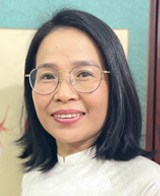 |
|---|---|---|
| Affiliation/Title | Associate Professor, Director Refinery and Petrochemical Technology Research Centre Ho Chi Minh City University of Technology (HCMUT) |
|
| Country | Socialist Republic of Viet Nam |
|
| Research Title | "Advanced Bio-based Aerogels from Agricultural Waste for Water Treatment" | |
| Social issue | Water pollution by oils and dyes is currently destroying the ecology of aquatic and terrestrial organisms and polluting the sand on seashore beaches as well as the surrounding water. Agricultural wastes also lead to severe environmental problems such as the release of greenhouse gases, particulate matter, and polycyclic aromatic hydrocarbons because they are treated improperly by burning on-site or being landfilled. It is extremely essential to recycle agro-waste into high-performance products for water pollution management. | |
| Achievement of R&D | We successfully develop the green technology and process to fabricate the aerogels from agriculture waste. Our developed procedure shortens the synthesis time by 2 times, limits the use of toxic and expensive chemicals than the traditional sol-gel method by utilizing eco-friendly and affordable cross-linkers like polyvinyl alcohol and xanthan gum. Aerogels from both pineapple leaves and chitosan are ultra-lightweight, super-porous (porosity of 99.36%), and have high adsorption capacity of 136.64 and 31.56 mg/g for methyl orange and methylene blue (MB), respectively. Aerogel composites from pineapple leaves and cotton waste also exhibit high adsorption capacity of 34.01 mg/g for MB and 15.8 g/g for oil. Lightweight coconut coir-based aerogels can adsorb both crystal violet and oil with the corresponding adsorption capacity of approx. 47 mg/g and 20 g/g. From 2019 to 2022, we achieved 14 papers and submitted 02 national patents related to bio-based aerogels from cellulose-based agricultural wastes for water treatment. |
|
| Social Implementation | During our research, we have discussed with industrial collaborators (DPN Aerogels JSC, Vietnam Food JSC) and some local companies who are interested in the mass production of aerogels. DPN Aerogels JSC is currently building a factory to apply the developed procedure with an output capacity of 100,000 m2/year. Together with the company, we are developing industrial-scale aerogel production via mass production activities, production line completion, and factory operation training. The finished products can be directly applied to the wastewater treatment system of local plants, canals, and riversides to evaluate their actual effectiveness, thus we are planning to test the efficiency of these aerogels in the wastewater treatment system of local textile plants (Det May 7 JSC) and oil treatment along rivers and canals. We also organize training sessions and workshops to introduce bio-based aerogels in terms of their characteristics, technology, applications, and values of agricultural waste. |
|
| Social Impact, Contribution to the SDGs | Our R&D activities will raise people's awareness of waste values, help them to approach the concept of recycling local waste for solving environmental problems, and reduce human activities of burning stems and leaves of crops after harvest. Our bio-based aerogels from agricultural waste exhibit better selectivity towards pollutants as well as impressively high adsorption capacity in water treatment. The developed techniques also meet the criteria of green chemistry and are in line with the sustainable development orientation of society. | |
| Activities |
|
|
| Message from Awardee | Climate change and the environment are always issues that need attention in technical development. Our technology to convert agricultural wastes into high-performance aerogels to manage water pollution is a sustainable solution. We sincerely thank The Hitachi Global Foundation for helping us bring this technology to the world. | |
|
Best Innovation Award
 "Development and Implementation of Hybrid Material-based Adsorbents to Provide Safe Water Sources"  Target 6.3 |
||
| Name | Sri Juari Santosa | 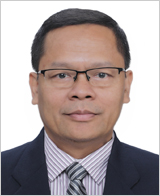 |
|---|---|---|
| Affiliation/Title | Professor Chemistry Department Faculty of Mathematics and Natural Sciences Gadjah Mada University (UGM) |
|
| Country | Republic of Indonesia |
|
| Research Title | "Providing Safe Water Sources for Drinking and Domestic Uses through the Development and Implementation of an Adaptable and Reusable Hybrid Material-Based Removal Method" | |
| Social issue | Indonesia has struggled for a long period of time in providing safe drinking water using alum as coagulant for removing dissolved organic compounds (DOCs). Therefore, the development of other approaches instead of coagulation using alum is very urgent. Indonesia has also a long-term problem of environmental contamination due to wastewater of textile industry that is commonly discharged directly to the environment. Therefore, effort to treat the wastewater before discharging to the environment is essentially important. |
|
| Achievement of R&D | In respond to these issues, we have anticipated by synthesizing and developing a hybrid material of magnetite and hydrotalcite (Mag-HT) as adsorbents for effective removal of DOCs in raw water of drinking water treatment. The synthesized material was much more effective than alum. The used material could be regenerated by eluting the adsorbed DOCs to produce an environmentally benign liquid fertilizer that is suitable for agricultural purposes. In the case of application of the hydrotalcite to treat wastewater of textile industry, the results showed that the material was much more powerful than the other commonly used adsorbents. The used material could be regenerated simply by calcination and then reused. Interestingly, the adsorption capacity of the material increased after calcination. |
|
| Social Implementation | The synthesized materials have been applied to remove DOCs from the real raw water of drinking water agency in Pontianak City, West Kalimantan Province, and to remove dyes in a synthetic wastewater mimicking the wastewater of Maju Mapan Textile Industry, East Java Province. Further action plan will be conducted through:
|
|
| Social Impact, Contribution to the SDGs | Implementation of our research and development coupled with an appropriate management of drinking water and that of industrial wastewater will ensure the sustainability of safe water resources. It will then give improvement to water quality (the SDGS’ goal no. 6.3) that in turn can improve ecosystem, reduce the number of deaths, promote the development, and eventually sustain economic growth and eradicate poverty, as formulated on the SDGS’ goals no. 2.4, 3.9, 17.7, 8.1, and 1.1, respectively. | |
| Activities |
|
|
| Message from Awardee | On behalf of my team, I would like to express my sincerely thanks to The Hitachi Global Foundation for granting us the best innovation award. Our activities have been successfully done because of support from various parties that consist of governmental and private agencies in Indonesia as well as the National University of Ho Chi Minh City, Vietnam and the Excellence Center for Development Cooperation, Germany. | |
|
Outstanding Innovation Award
 "Toren Biogas (Torbi) to Recover Biogas and Liquid Fertilizer from Food Waste"  Target 11.3 11.6 |
||
| Name | Cindy Rianti Priadi | 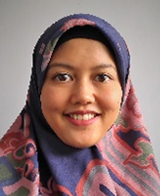 |
|---|---|---|
| Affiliation/Title | Assistant Professor, Lecturer Department of Civil and Environmental Engineering Faculty of Engineering University of Indonesia (UI) |
|
| Country | Republic of Indonesia |
|
| Research Title | "User-oriented nutrient and energy recovery of food waste at the source with Toren Biogas (Torbi)" | |
| Social issue | Each Indonesian produces about 300 kg of food waste annually, making up almost half of urban waste. It causes diseases, odor and methane gas which accounts for 8% of the Indonesia’s GHG emissions. Diverting food waste from landfill while simultaneously recovering its nutrient and energy recovery is therefore paramount. | |
| Achievement of R&D | Torbi is a cost-effective LLDPE reactor that converts food waste into biogas and liquid fertilizer, with a price of around half compared to similar reactors available in the Indonesian market today. Torbi’s footprint is less than 1 m2 and can process organic waste up to 3 kg/day. It is designed to promote passive mixing and safe biogas storage. Households and communities can treat their organic waste and obtain biogas equivalent to 6 kg of LPG and 50 liters liquid fertilizers per month for soil nutrient needs, reducing burden of food waste management and odor as well as health impact downstream. | |
| Social Implementation | Torbi has been installed in many places, such as privately owned properties (in Bogor and Bandung) and in disaster areas and needed communities (UI Care Project in Banten, Karawang, Lombok). Torbi has also been installed in the Marine and Fisheries Community Academy (AKKP) in Wakatobi, UNESCO world biosphere marine reserve. Torbi is not only an object but also part of community engagement. When Torbi is installed, trainings on responsible waste management are also conducted to students, households, and communities. | |
| Social Impact, Contribution to the SDGs | Torbi supports organic waste treatment close to the source (SDG 12.4-waste management), reduces methane emission (SDG 13.3-climate change mitigation) by using it for households (SDG 7.1-affordable energy and SDG 7.2-renewable energy) and reducing burden of food waste for municipality (SDG 11.3-sustainable urbanization). | |
| Activities |
|
|
| Message from Awardee | We are very honored to receive this award and hope that it can support a broader dissemination of Torbi through a more intensive pentahelix collaboration especially in the Asian region. Through a pro-active research, demand creation and community engagement, we can together achieve an ideal responsible waste management. | |
|
Outstanding Innovation Award
 "Building Inclusive and Sustainable Urban Periphery through Government-industry Cooperation"  Target 11.3 |
||
| Name | Delik Hudalah | 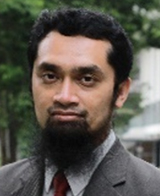 |
|---|---|---|
| Affiliation/Title | Professor School of Architecture, Planning and Policy Development Bandung Institute of Technology (ITB) |
|
| Country | Republic of Indonesia |
|
| Research Title | "Building inclusive and sustainable urban periphery through government-industry cooperation" | |
| Social issue | Most local governments in the peripheries of Jakarta Metropolitan Area are underdeveloped and lack financial, human resources, and institutional capacity. They are unable to cope with pressing issues associated with rapid and large-scale peri-urbanization, such as traffic congestion, air and water pollution, housing shortages, and social disintegration. | |
| Achievement of R&D | We supported the cooperation between seven industrial park managers, governments, and state owned enterprises to deal with the declining competitiveness of the largest industrial town agglomeration around Jakarta due to local infrastructure fragmentation and disconnections. It reveals that the key strategies for successful initiation of the cooperation include: building of informal and person-to-person communication among the participating actors to promote better coordination; creation of thematic forums as the key vehicles for information exchange, collaboration initiation, and social control; and design of consensus-oriented decision-making processes to produce non-legally binding action plans. | |
| Social Implementation | We promoted the provincial government as the leader of this cooperation. We encouraged the provincial government to build its institutional and financial capacity through state-owned enterprises and public-private partnerships. With this newly built capacity, the government was able to play a central role in building regional vision and managing the flow of key resources as the basis for maintaining the cooperation’s sustainability. In collaboration with the provincial government and industrial managers’ association, we organized meetings, seminars, forums, and networking sessions with local and national governments, developers, investors, academicians, and planners. | |
| Social Impact, Contribution to the SDGs | Through this cooperation, infrastructure provision can be shared among industrial town managers, and, thus, the social, economic, and logistic costs can be reduced. In addition, neighboring town projects can be linked and interconnected to improve overall local infrastructure accessibility and reduce the traffic burden faced by national and regional infrastructure. | |
| Activities |
|
|
| Message from Awardee | Government leadership and industrial cooperation is a key innovative strategy to achieve sustainable and inclusive communities in the context of rapidly growing metropolis. | |
|
Outstanding Innovation Award
 "Development of a Community Based Multi Hazard Early Warning System"  Target 11.5 11.b |
||
| Name | Teuku Faisal Fathani | 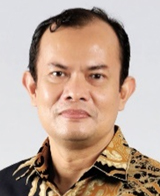 |
|---|---|---|
| Affiliation/Title | Professor Department of Civil and Environmental Engineering Gadjah Mada University (UGM) |
|
| Country | Republic of Indonesia |
|
| Research Title | "Development of a community based low cost and most adaptive multi hazard early warning system" | |
| Social issue | Indonesia is very prone to disasters namely earthquakes, tsunamis, landslides, and floods due to its geology. Its huge population has posed some challenges for disaster management, particularly from the social perspective. Therefore, developing multi hazard early warning system that includes social consideration to ensure the efficacy of its implementation is necessary. | |
| Achievement of R&D | We have developed a community based early warning system (EWS) that integrate multidisciplinary approach (technical and social). The early warning system is made to be simple and adaptive to make sure that the system is effective and appropriate for the affected communities. The system involves the participation of the local government, namely Regional Disaster Management Agency and the local community in its implementation where they can learn and improve their capability in disaster mitigation and thus, strengthen their resilience and capacity to natural disasters in Indonesia and reduce risk from disasters. | |
| Social Implementation | Universitas Gadjah Mada (UGM) and The Indonesian Authority for Disaster Management have worked together for years in disaster management. We also established GAMA-InaTEK, a research institution focusing on disaster mitigation and technological innovation. We have worked with disaster management agencies, universities, and private sectors to install the EWS in 33 provinces, 130 cities/districts in Indonesia and improve and strengthen the capacity of the affected communities in disaster management. The system is also installed in Myanmar and other countries. As we have established the Indonesian Standard SNI and ISO, we have integrated disaster risk reduction measures into policy, regulation, and planning. | |
| Social Impact, Contribution to the SDGs | We will continue developing the multi hazard EWS to meet the needs of the communities. (SDGs Goal 9). The implementation of the EWS will strengthen the resilience of the communities and the government against disasters, including climate related disasters. The Indonesian Standard SNI and ISO will ensure that disaster management will be incorporated into policy and planning. (SDGs Goal 11 and 13) | |
| Activities |
|
|
| Message from Awardee | The community based multi hazards EWS is a low cost and simple disaster risk reduction measure involving the communities and the government. We hope that it can be adopted in more areas in Indonesia and other countries so that it can improve the resilience of communities to disasters, particularly climate related disasters. | |
|
Outstanding Innovation Award
 "Wetland Roof (WR) System for Domestic Wastewater Treatment and Sustainable Cities"  Target 6.3 |
||
| Name | Thanh Xuan Bui | 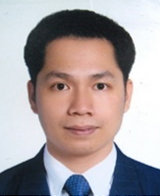 |
|---|---|---|
| Affiliation/Title | Associate Professor VNUHCM Key laboratory of Advanced Waste Treatment Technology Ho Chi Minh City University of Technology (HCMUT) |
|
| Country | Socialist Republic of Viet Nam |
|
| Research Title | "Wetland roof (WR) system for domestic wastewater treatment and sustainable cities" | |
| Social issue | In the urban cities of Viet Nam or other developing countries the domestic wastewater (~ 90%) is untreated and being discharged into water body, making canals, lakes, rivers to be heavy polluted. Most of the roof buildings/houses made of concrete which makes the cities hot and not environmentally friendly. | |
| Achievement of R&D | Wetland roof (WR) which is an ecological shallow bed wetland treatment system using local plants and super thin bed media has been developed. The WR can help improve environmental quality, solve some typical problems in an urban city such as treating domestic wastewater, improving thermal benefits (reduce heat island effect), reducing the air pollution, enhancing urban green coverage and biodiversity, etc. The WR system has been granted a patent in the US. Five research papers have been published in the prestigious journals. | |
| Social Implementation | Treated domestic wastewater using WR complied with the national discharge standard and the water reuse standards. WR systems could create high green coverage (99 m2 of green leaf per m2 of the wetland area). Confirm that wetland roof could be an ecological engineering solution for complete treatment of domestic wastewater from the urban buildings or households. | |
| Social Impact, Contribution to the SDGs | The potential of the innovative WR is aligned with several sectoral areas. This will promote the principles of sustainability through science and technology to counteract diffuse pollution via novel nature-based solutions. The main sectors are clean water and sanitation (SDG 6) and sustainable cities and the built environment (SDG 11). | |
| Activities |
|
|
| Message from Awardee | Sincere thanks to The Hitachi Global Foundation for the Asia Innovation Award 2022. I believe that the award will continue to grow and honor other scientific researchers in the future. | |

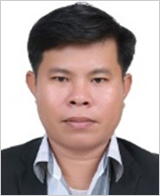 "Development of High Value-added Vinegar Products Using Cashew Apple"  Target 11.6 |
|
| Name | Chim Chay |
|---|---|
| Affiliation/Title | Vice Dean Faculty of Agro-Industry Royal University of Agriculture (RUA) |
| Country | Kingdom of Cambodia |
| Research Title | "Innovation of high value-added agricultural products through agro-processing and packaging technologies: a case study on vinegar product" |
| Summary The research study entitled “Innovation of high value added agricultural products through agro-processing and packaging technologies: a case study on vinegar product” generally aims at exploring potential processing technologies for the development of value-added products especially vinegar from cashew apple. Product innovation and packaging technologies suitable for Cambodian food processors’ condition will be developed. The processing models will be used as a guide in food processing management of the envisioned products from cashew apple. Utilization of cashew apple into value-added products after removal of nut will therefore help in the reduction of environmental wastes and increase the income of the local farmers and food processors. The concept of innovation high value added agricultural products through agro-processing and packaging technology was be show as bellow: |
|
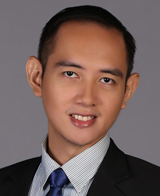 "Freshwater Biodiversity Surveys for Species Discovery, Conservation, and Aquatic Resource Management"  Target 6.6 |
|
| Name | Emmanuel Diza Delocado |
|---|---|
| Affiliation/Title | Assistant Professor Department of Biology Lab Head, Ateneo Biodiversity Research Laboratory Ateneo de Manila University (ADMU) |
| Country | Republic of the Philippines |
| Research Title | "Freshwater biodiversity surveys for species discovery, conservation, and aquatic resource management" |
| Summary Massive degradation of inland freshwater ecosystems due to anthropogenic activities risks the biodiversity and water security of river valleys, the birthplace of civilization and a lifeline to humanity. Such diminishing quality of rivers threatens the often-neglected organisms, such as insects, which provide essential ecosystem services and may have bioindicator potential. Thus, this R&D project aims to discover insect species across the Philippine archipelago and to update the biodiversity inventory. By using integrative taxonomic framework which couples classical microscopy and modern DNA-based methods, at least 150 species were described by the Ateneo Biodiversity Research Laboratory in the past years. In the course of the project, various local government units and communities were made aware of the previously undocumented rich diversity in their area. This initiative contributes to target 6.6 (protection and restoration of water-related ecosystems) by harnessing the potential for community participation in improving the management of aquatic resources (target 6.b). |
|
 "The Philippine Groundwater Outlook (PhiGO) Project"  Target 6.1 6.4 6.5 |
|
| Name | Maria Aileen Leah Guerrero Guzman |
|---|---|
| Affiliation/Title | Associate Professor, Department Chairperson Department of Environmental Science, School of Science and Engineering Ateneo de Manila University (ADMU) |
| Country | Republic of the Philippines |
| Research Title | "The Philippine Groundwater Outlook (PhiGO) Project" |
| Summary The Philippines wants universal and equitable access to safe and affordable drinking water for all by 2030. Recognizing its importance, the government aims to preserve and restore groundwater. The PhiGO project: (1)Developed, installed & maintained sensors for real-time monitoring of groundwater levels and groundwater quality. (2)Allowed the government through the National Water Resource Board (NWRB) to formulate decisions based on real-time data, enhanced models of regional groundwater dynamics, and seasonal & long-term forecasts of groundwater; and (3)Shared data through an improved website for groundwater management. The project was a 3-year collaboration led by the British Geological Survey (BGS) & ADMU under the Philippine – United Kingdom Newton Agham S&T Cooperation Program on Understanding the Impacts of Hydrometeorological Hazard in the Philippines. The water-critical cities of Pampanga & Iloilo were the study sites. Results will be replicated in other water-critical cities as well as in key tourists’ destinations. |
|
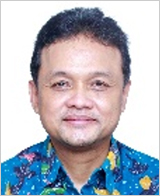 "SONJO: Humanitarian Movement with Online-Based Social Capital in Yogyakarta during the Pandemic"  Target 11.3 11.5 11.b |
|
| Name | Rimawan Pradiptyo |
|---|---|
| Affiliation/Title | PhD Department of Economics Faculty of Economics and Business Gadjah Mada University (UGM) |
| Country | Republic of Indonesia |
| Research Title | "SONJO: Online-Based Social Capital That Aims to Minimize the Adverse Impact of COVID-19 in Yogyakarta" |
| Summary During the COVID-19 pandemic, the economy and health sectors experienced unprecedented pressure due to the increasing number of COVID-19 patients. SONJO is an online-based social capital that uses WhatsApp groups (WAGs) to coordinate and deliver 14 programs in health and 8 programs in the economy to minimize the impact of the pandemic in Yogyakarta. No funding is required for SONJO as it mobilizes non-monetary resources to create outcomes, by promoting integrity, transparency, sympathy, and synergy. It has been operating since 24/03/2020 with about 2300 members distributed among 30 WAGs, of which there are 6 joint WAGs between SONJO with communities/companies in 5 other provinces. The outcomes of SONJO include: a) 352 SMEs have joined SONJO’s showcase apps; b) SONJO promoted the development of 51 isolation shelters across 3 provinces; c) SONJO’s crowd-funding mass vaccination has been delivered for 221.829 doses and counting. SONJO promotes SDGs 3, 11, 16 and 17. |
|
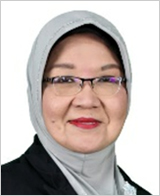 "Blockchain-based Sustainable Building Information Modelling Management Technology for Inclusive and Sustainable Urbanization"  Target 11.3 11.6 |
|
| Name | Riri Fitri Sari |
|---|---|
| Affiliation/Title | Professor Department of Electrical Engineering Faculty of Engineering University of Indonesia (UI) |
| Country | Republic of Indonesia |
| Research Title | "Blockchain-based Sustainable Building Information Modelling Management Technology for Inclusive and Sustainable Urbanization Based on UI GreenCityMetric Initiative" |
| Summary The world faces many challenges, such as water, energy, climate change, pollution, demographic change, aging population, pandemics and public health problems, inequality and poverty, governance, natural disasters, and education. We believe that City and District Governments have a very important role to play in addressing these challenges. We formulated an online questionnaire with a novel methodology to calculate the UI GreenCityMetrics index. We invited all local government from cities in Indonesia to be more aware to the Sustainable Development Goals (SDGs). UI GreenCityMetric seeks to advance the state of Indonesian cities and communities to be more aware on shaping sustainable cities. This is conducted by collaborating with many sustainability leaders and recognizing solutions to sustainability Challenges. As part of our thematic priorities efforts to promote sustainability indicators, R&D findings related to blockchain-based Building Information Modelling (BIM) were presented to be a game changing approach to create sustainable cities and communities. |
|
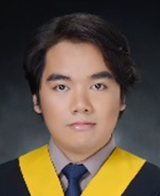 "Oryzinc® Bioinoculant Reduces Crop Nitrogen and Zinc Fertilizer Requirement by 50%"  Target 6.3 |
|
| Name | Robert Alejandro Nepomuceno |
|---|---|
| Affiliation/Title | Researcher National Institute of Molecular Biology and Biotechnology University of the Philippines Los Baños (UPLB) |
| Country | Republic of the Philippines |
| Research Title | "Oryzinc® bioinoculant reduces crop nitrogen and zinc fertilizer requirement by 50%" |
| Summary Traditional agriculture is dependent on the over-application of chemical fertilizers to maximize yield. Unfortunately, the excess fertilizers and heavy metal soil amendments inadvertently contaminate water by leaching nitrates and metals into the groundwater. The Oryzinc™ technology minimizes fertilizer use by taking advantage of the already existing unavailable forms of zinc in the soil and utilization of nitrogen in the atmosphere through nitrogen fixation. This is possible since Oryzinc™ contains a multitrait microorganism capable of nitrogen-fixation and zinc-solubilization. Oryzinc™ contributes to the farmer's income since Oryzinc™ production is very cheap. Also, the decrease in the use of chemical fertilizer leads to the conservation, management, and re-establishment of natural microflora and fauna, especially beneficial soil microbiota. Indirectly, the proliferation of beneficial soil microbes suppresses soil-borne pathogens leading to reduced pesticide/fungicide use. Lastly, the reduced dependence on fertilizer importation is advantageous to the Philippine economy, making it less reactive to sudden geopolitical occurrences. |
|
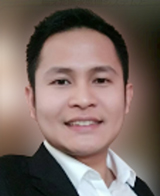 "Establishment of a Waste-water Treatment System with Biogas Generation, Purification, and Supply System for pig farms and a Production and Distribution Network for Biofertilizer"  Target 6.3 6.4 6.6 |
|
| Name | Sounthisack Phommachanh |
|---|---|
| Affiliation/Title | Dr. Department of Mechanical Engineering Faculty of Engineering National University of Laos (NUOL) |
| Country | Lao People's Democratic Republic |
| Research Title | "Waste-water treatment system installed and effectively operated at the pig farm with full set of biogases generation, purification, and distribution system. Bio-fertilizer production-distribution chain established" |
| Summary In Lao PDR, husbandry is one of the industries with the fastest rate of growth, especially in the pig industry. Untreated pig farm’s wastes have seriously harmed the environment by causing odors, flies, polluted water, and other problems. The possible way to solve the problems is through anaerobic digestion of the organic wastes. Biogas system in livestock farms is based on biogas technology, where the organic matters in the wastewater shall be digested by the so-called anaerobic bacteria (digestion without access of oxygen) and converted mainly into methane gas (CH4) and Carbon dioxide (CO2) approximately in a proportion of -65:35. This gas mixture is flammable and can be a high-quality energy source for thermal and machinery applications. Besides, anaerobic digestion process shall reduce up to 70-90% of organic compounds in form of COD (Chemical Oxygen Demand) and BOD (Biochemical Oxygen Demand) that contained in the wastewater. Social significance of the project to communities can be described as following: – Air quality in surrounding farm communities significantly improved (reduced 80%). – Water and soil pollution in surrounding rice fields completely removed. – Biogas use for free (the biogas pipeline is connected to the households, who wish to use biogas). – Solved tension between local people and farm owner due to environment impacts from pig farms – Avoided certain amount of GHG emission (about 43 tons of methane annually, or equivalent to around 900 tons of CO2 emission) This project R&D contribute to SDGs especially Goal 6 "Clean water and sanitation" and Goal 11 "Sustainable cities and communities." |
|
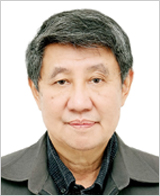 "Combination of Anaerobic and Aerobic Processes to treat Textile Wastewater"  Target 6.3 6.6 |
|
| Name | Tjandra Setiadi |
|---|---|
| Affiliation/Title | Professor Department of Chemical Engineering Faculty of Industrial Technology Bandung Institute of Technology (ITB) |
| Country | Republic of Indonesia |
| Research Title | "Combination of Anaerobic and Aerobic Processes to treat Textile Wastewater in Supporting Green Chemistry" |
| Summary Water is an essential resource for life on the planet and human development. The textile industry is a major global economic sector. Textile effluent especially dyes are highly toxic pollutants that hampers health, and social and environmental integrity. Current conventional treatment technologies lack in several aspects including- capital, operation, energy, and maintenance requirement. We developed novel Anaerobic Membrane Bioreactor- Downflow hanging sponges’ systems along with other reactor configurations to treat high-strength textile dyeing effluent containing toxic dyes. High-quality treated water was obtained. The proposed technology has high significance toward all three vital pillars of sustainable development naming- Social, Environmental and Economic. The system contributes to the SDGs related to the environment, health, technology, and education with an emphasis on SDG Targets of 3.9, 4, 6.3, 6.6, 7. b, 11.3 and 15.1. This system can potentially be used in industrial wastewater management for social and community welfare and supporting Green Chemistry. |
|
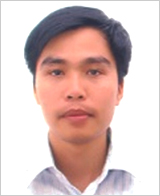 "Development of Metal Oxide Composites for Wastewater Purification Technology"  Target 6.2 6.4 6.6 |
|
| Name | Tuan Anh Vu |
|---|---|
| Affiliation/Title | Associate Professor Department of Analytical Chemistry School of Chemical Engineering Hanoi University of Science and Technology (HUST) |
| Country | Socialist Republic of Viet Nam |
| Research Title | "Improve the Efficiency of Advanced Oxidation Processes (AOPs) by Composites-based Metal Oxides (Fe2O3, TiO2, ZnO) for Treatment of Wastewater" |
| Summary Water is an indispensable part of life that is being progressively seriously polluted by various contaminants including dye, pharmaceutical, and pesticide effluents, leading to environmental destruction and threat to ecosystems because of the discharge of highly toxic and non-biodegradable wastewater. Most Asian cities do not have effective wastewater treatment systems. The selection of an effective and economical wastewater treatment method is significantly necessary to clean water and protect people's hygiene. Our study is the development of metal oxide composites for wastewater purification technology. We have achieved some results in controlling the morphology of materials, studying the influence of reaction parameters on the processing efficiency of treatment of toxic organic substances in wastewater, and improving the efficiency of AOPs through morphology, material composition, and optimal reaction conditions. The water treatment system using AOPs by metal oxide catalysts (Fe2O3, ZnO, and TiO2) is highly efficient, energy-saving, and low-cost because it can use sunlight and is reusable many times, which will promise a significant change in production and environmental protection in Vietnam. The study's success contributes to (1) reducing production costs; (2) protecting water resources, ecosystems, and human health, and extending human lifespan. Our R & D contributes to SDGs goals, especially SDG goal 6 "Clean water and sanitation" with target numbers 6.2, 6.4, and 6.6. |
|
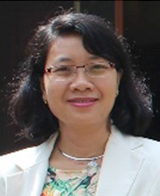 "Aloxy - Sustainable Lamp System Using Algae"  Target 11.6 11.7 |
|
| Name | Yen Thi Thai Doan |
|---|---|
| Affiliation/Title | Associate Professor School of Environmental Science and Technology Hanoi University of Science and Technology (HUST) |
| Country | Socialist Republic of Viet Nam |
| Research Title | "Aloxy, the algae-based system as the sustainable solution for indoor air purification, fresh oxygen production, and green interior spaces decoration simultaneously" |
| Summary Indoor air quality has become a major concern, causing considerable worry. The high CO2 concentrations and fine particulate matter levels cause indoor-air quality to deteriorate, causing officers to lose focus and suffer headaches, or directly affecting human health owing to lengthy exposure durations. Aloxy, our breakthrough algae lamp system, could absorb CO2, create fresh oxygen for improved indoor air quality, and give a green décor for the interior spaces all at the same time. We carried the configuration optimization, examined durability, hardness, and strength of various tube materials, investigated the parameters that influence CO2 absorption efficiency, such as algal species, light intensity, and air flow rate... Finally, the tube with airlift aeration and a light source in the center of the tube was the best. The most revolutionary feature is finding the suitable LED type to uniformly distribute irradiation to algae cells while also saving energy. The progression from research prototype to marketed algae-based system is ongoing and expected ("Vietnamese only" https://vtv.vn/video/cong-nghe-360-2022-so-16-576758.htm). The research might assist in improving indoor air quality, lowering CO2 emissions, and creating green living spaces, all of which contribute to the SDGs, particularly goals 11.6 and 11.7 (paying attention to air quality and waste management) (Access to green and public spaces). |
|
Reference link
The Hitachi Global Foundation
Office of The Hitachi Global Foundation Asia Innovation Award